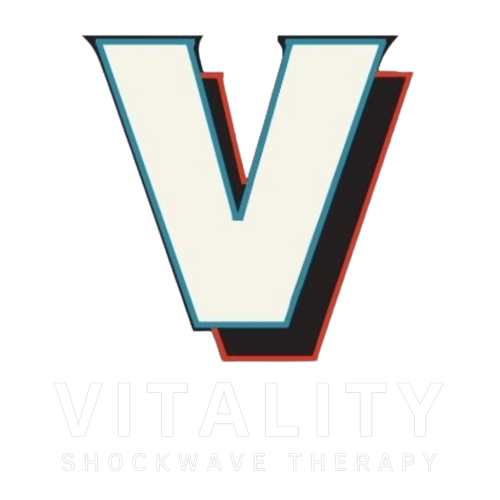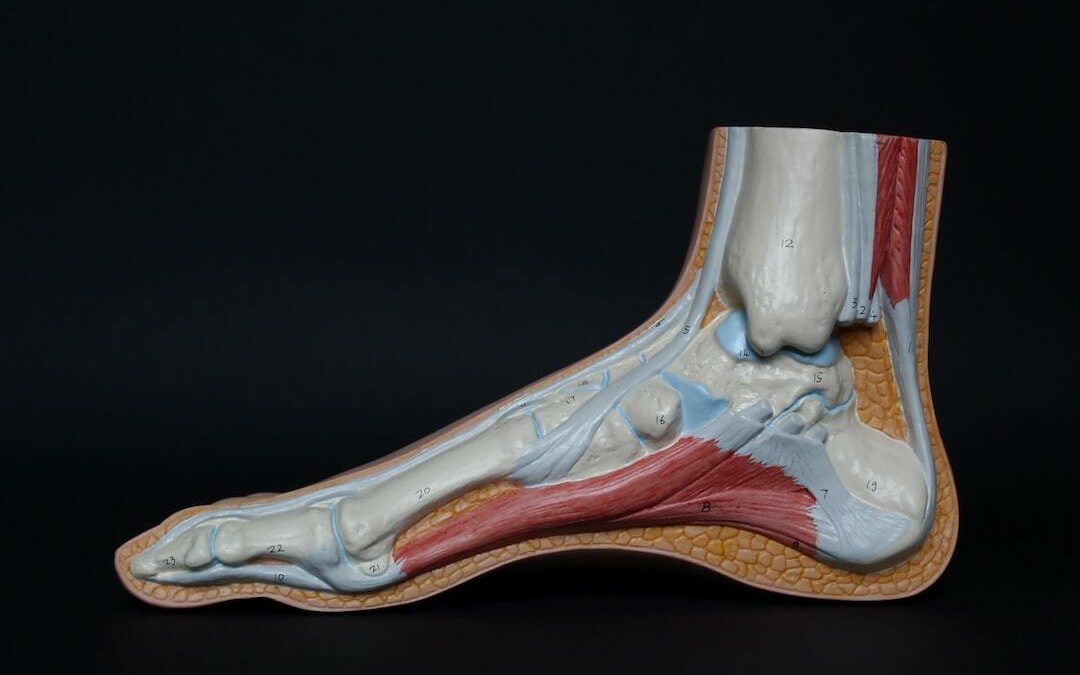3 Ways Shockwave Therapy Can Help Plantar Fasciitis – a game changer for those suffering from this debilitating condition.
Plantar fasciitis, the bane of athletes and busy professionals alike, can be a stubborn ailment to treat. Traditional therapies may provide temporary relief but often fail to address the root cause. Enter shockwave therapy: an innovative treatment option that’s gaining traction in the medical community.
Table of Contents:
- Shockwave Therapy for Plantar Fasciitis: A Game Changer?
- Accelerating Healing with Shockwave Therapy
- Reducing Pain Through Nerve Stimulation
- Breaking Down Calcifications with Shockwaves
- Success Rates and Recommendations for Treating Chronic Plantar Fasciitis
- Procedure, Side Effects, and Recovery Time
- Conclusion
Shockwave Therapy for Plantar Fasciitis: A Game Changer?
Let’s face it, plantar fasciitis can be a real pain in the foot. If you’ve tried all the traditional methods and still haven’t found relief, shockwave therapy might just be your saving grace. This non-invasive treatment option has been gaining attention lately for its potential benefits in treating plantar fasciitis.
So how does this magical process work? In simple terms, shockwave therapy uses targeted acoustic energy to promote healing and reduce pain associated with plantar fasciitis. The best part? It’s an outpatient procedure that doesn’t require any anesthesia or downtime.
Accelerating Healing with Shockwave Therapy
You might ask yourself, “How exactly does shockwave therapy help my body heal faster?” The answer lies in its ability to increase metabolic activity within cells, leading to faster recovery times compared to conventional therapies like ice, heat, stretching, and strengthening exercises.
When it comes down to the numbers game, shockwave therapy has a leg up on traditional treatments for plantar fasciitis. In fact, studies have shown that patients who undergo this treatment experience significantly shorter recovery periods than those who stick with more conservative methods.
Accelerating Healing with Shockwave Therapy
Let’s dive into the science of healing.
One major advantage of plantar fasciitis shockwave therapy is its ability to speed up your body’s natural recovery process.
But how does it work?
Activating Cellular Metabolism
This innovative treatment stimulates cellular metabolism within injured tissues, promoting faster healing than traditional methods. Shockwave therapy has been shown to increase blood flow and promote tissue regeneration at a cellular level.
Comparing Recovery Times Between Treatments
If you’re tired of relying on ice packs and stretching exercises that don’t seem to help, shockwave therapy might be just what you need. Studies have demonstrated significantly shorter recovery times for patients who undergo this treatment compared to those who rely on more conventional therapies alone.
Treatment Options: Traditional vs. Shockwave Therapy
- Icing: Reduces inflammation but doesn’t address underlying issues causing plantar fasciitis pain.
- Stretching & Strengthening Exercises: Can provide relief over time but may not be enough for chronic cases.
- Cortisone Injections: Offer temporary pain relief; however, repeated injections can weaken tendons and cause further damage.
- Shockwave Therapy: Accelerates healing, reduces pain, and addresses underlying issues without invasive procedures or medications.
Reducing Pain Through Nerve Stimulation
Let’s discuss the prospect of alleviating pain, yes?
By stimulating nerves responsible for sensation around affected areas, shockwave therapy can reduce pain levels and improve mobility in those suffering from plantar fasciitis. This means less discomfort and more mobility for those suffering from plantar fasciitis.
But how does it work exactly?
Mechanism behind nerve stimulation
The secret lies in the targeted acoustic energy used during treatment. This energy travels through soft tissue, reaching deep into your body and activating specific nerve fibers that help block pain signals from being transmitted to your brain. It’s pretty cool, right?
Analgesic effects of shockwaves
- No need for invasive options like cortisone injections or surgery.
- In a study published in the Clinical Journal of Sport Medicine, patients reported significant improvements in their symptoms after undergoing extracorporeal shock wave therapy (ESWT) treatments.
- The best part? Patients experienced the benefit of ESWT without any adverse reactions commonly seen with other treatments such as medications or steroid injections, making it an ideal choice for those looking to alleviate chronic plantar fasciitis pain.
- You can say goodbye to pesky side effects while still enjoying effective relief from chronic plantar fasciitis pain.
So there you have it. Shockwave therapy not only accelerates healing and breaks down calcifications but also provides significant pain relief through nerve stimulation. It’s a great option for athletes, entrepreneurs, high level executives, police officers, healthcare providers, and anyone else looking for effective treatment options for plantar fasciitis. If you’re interested in treating chronic plantar fasciitis with shockwave therapy, Vitality Shockwave Therapy can help. Contact us today to learn more.
Breaking Down Calcifications with Shockwaves
Let’s talk about calcium deposits.
Over time, these pesky little things can form within tendons and contribute to inflammation and pain related to plantar fasciitis.
Luckily, shockwave therapy comes to the rescue.
This innovative treatment effectively breaks up calcifications while promoting overall healing within injured tissues – offering another avenue towards symptom relief.
Addressing Tendon Calcification Issues
The science behind it is fascinating:
- Shockwaves are generated by a specific device
- These waves travel through tissue and create microtrauma at the site of calcification.
- This process stimulates your body’s natural healing response, breaking down those stubborn calcium deposits in the process.
Impact on Inflammation Reduction
Besides breaking down calcifications, there’s more good news:
- Treating chronic plantar fasciitis with shockwave therapy has been shown to reduce inflammation levels around affected areas as well.
- In fact, a study published in The Journal of American Academy of Orthopaedic Surgeons found that patients who underwent extracorporeal shock wave therapy experienced significant decreases in inflammation markers.
Shockwave therapy not only aids in the breakdown of calcifications, but it also reduces inflammation – a great benefit for those with plantar fasciitis without the need for surgery or cortisone injections.
And the best part?
You can enjoy these benefits without resorting to invasive options like cortisone injections or surgery.
Talk about a game-changer.
Success Rates in Chronic Plantar Fasciitis Cases
You might be wondering about success rates – after all, who doesn’t want results?
Well, the good news is that shockwave therapy has been particularly successful in treating chronic plantar fasciitis cases.
Studies have shown a success rate of up to 88% for patients who haven’t responded well to conservative treatment options.
In other words, if you’ve tried everything else and still can’t shake off that pesky heel pain – shockwave therapy might just be your ticket to relief.
Procedure, Side Effects, and Recovery Time
So, you’re considering shockwave therapy for plantar fasciitis? Let’s walk through the process together (pun intended).
First, let’s discuss what to expect during the procedure.
What to Expect During the Procedure
No anesthetic is needed for this non-invasive treatment, so you can relax. You’ll be comfortably seated while a healthcare provider applies ESWT device to your affected foot. As they deliver targeted acoustic energy waves, you may feel light-to-moderate tapping sensations – nothing too intense.
Post-Treatment Recovery Process
Now, let’s talk about the recovery process. One of the benefits of shockwave therapy is its minimal downtime. No negative repercussions have been reported from shockwave therapy for those suffering with chronic plantar fasciitis, making it a beneficial choice. This means that you can return to work immediately after your session – talk about convenience.
Conclusion
Overall, Shockwave Therapy is a promising treatment option for those suffering from Plantar Fasciitis. As outlined below, there are three main ways in which this therapy can help: accelerating the healing process, reducing pain levels, and breaking down calcifications.
Success stories have shown that it’s an ideal treatment option after exhausting traditional therapies while avoiding invasive procedures such as cortisone injections or surgery.
- Accelerating the Healing Process: Shockwave Therapy works by stimulating the body’s natural healing process. The shockwaves promote blood flow to the affected area, which in turn accelerates the healing process. This is particularly beneficial for those with chronic Plantar Fasciitis who have struggled to find relief through other treatments.
- Reducing Pain Levels: Shockwave Therapy has been shown to be effective in reducing pain levels associated with Plantar Fasciitis. The shockwaves help to desensitize the affected area, which can provide immediate relief. Additionally, the therapy can help to reduce inflammation, which is a common cause of pain in those with Plantar Fasciitis.
- Breaking Down Calcifications: Shockwave Therapy can also help to break down calcifications that may have formed in the affected area. This is particularly beneficial for those with chronic Plantar Fasciitis who have developed calcifications that are resistant to other treatments.
For athletes, entrepreneurs, high-level executives, police officers, and healthcare providers, Shockwave Therapy can be a game-changer. It offers a non-invasive treatment option that can provide relief from the pain and discomfort associated with Plantar Fasciitis.

